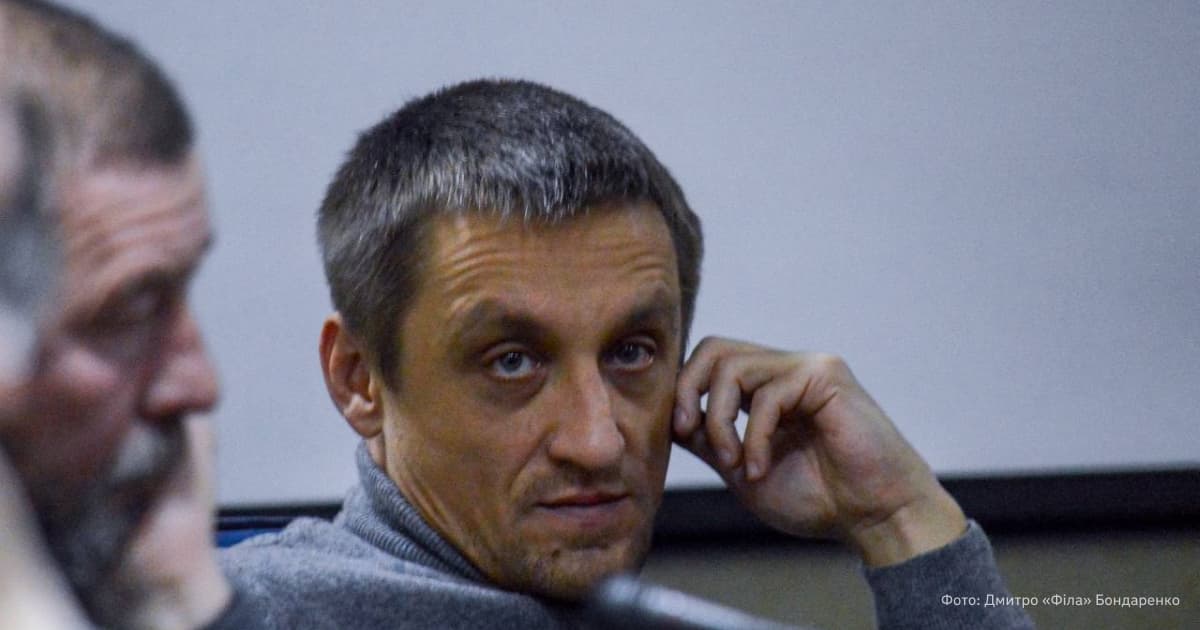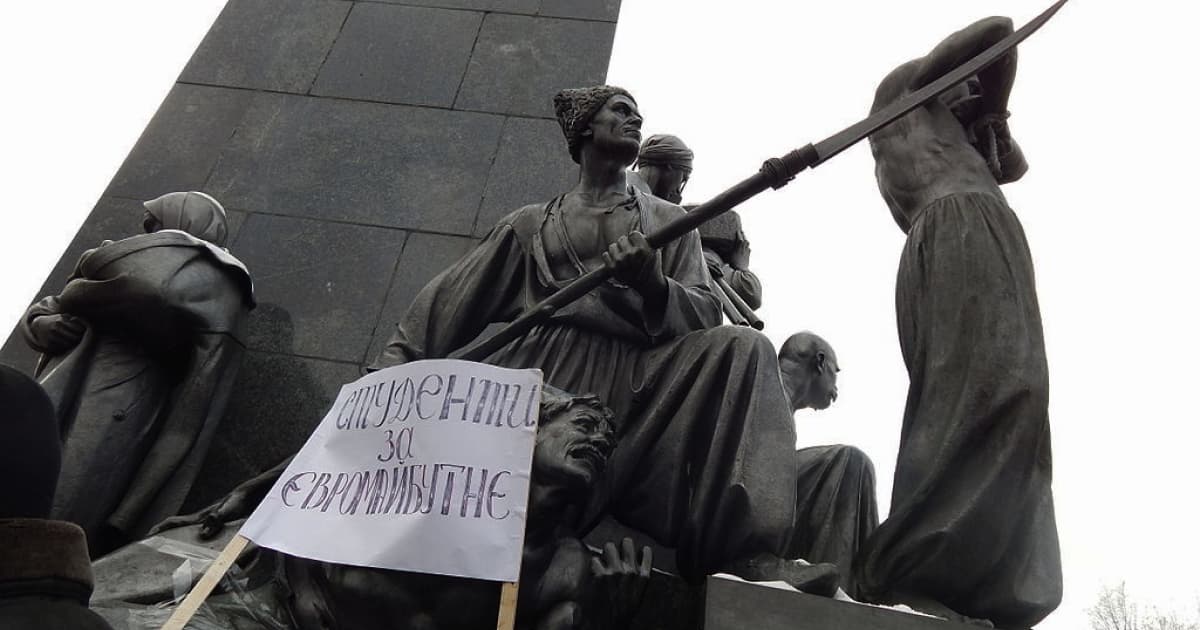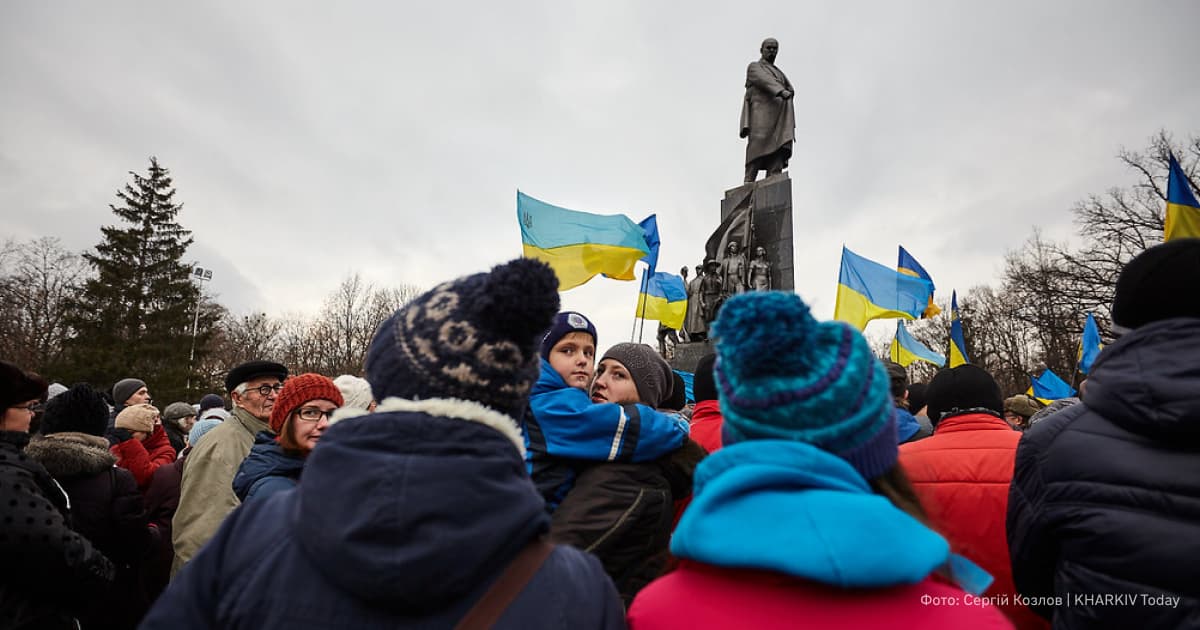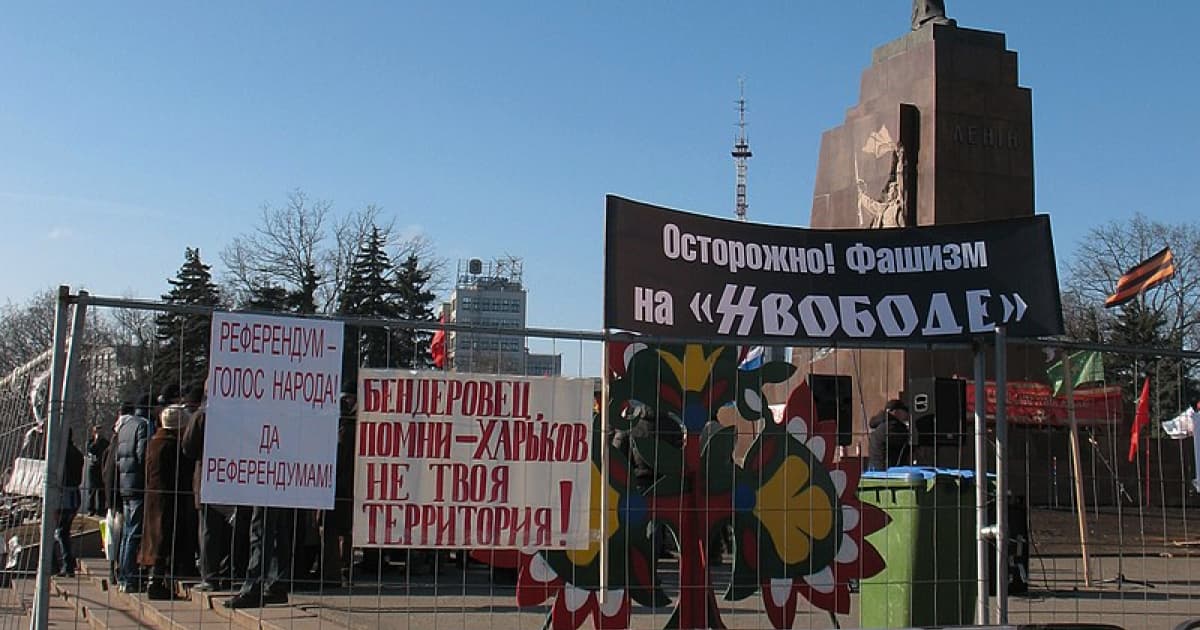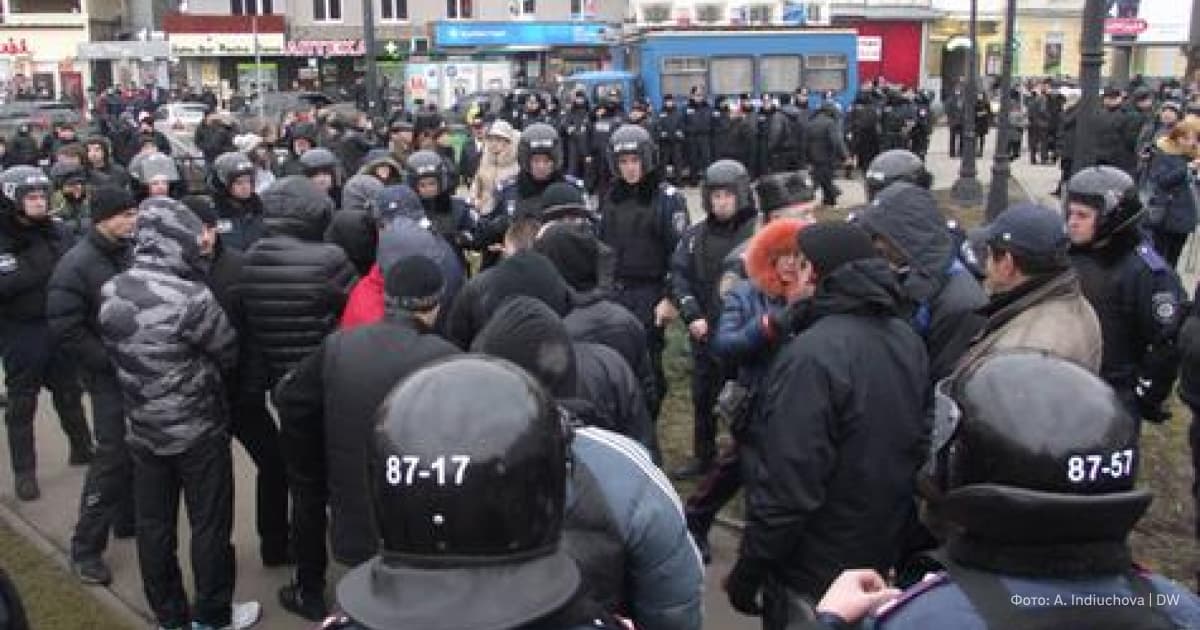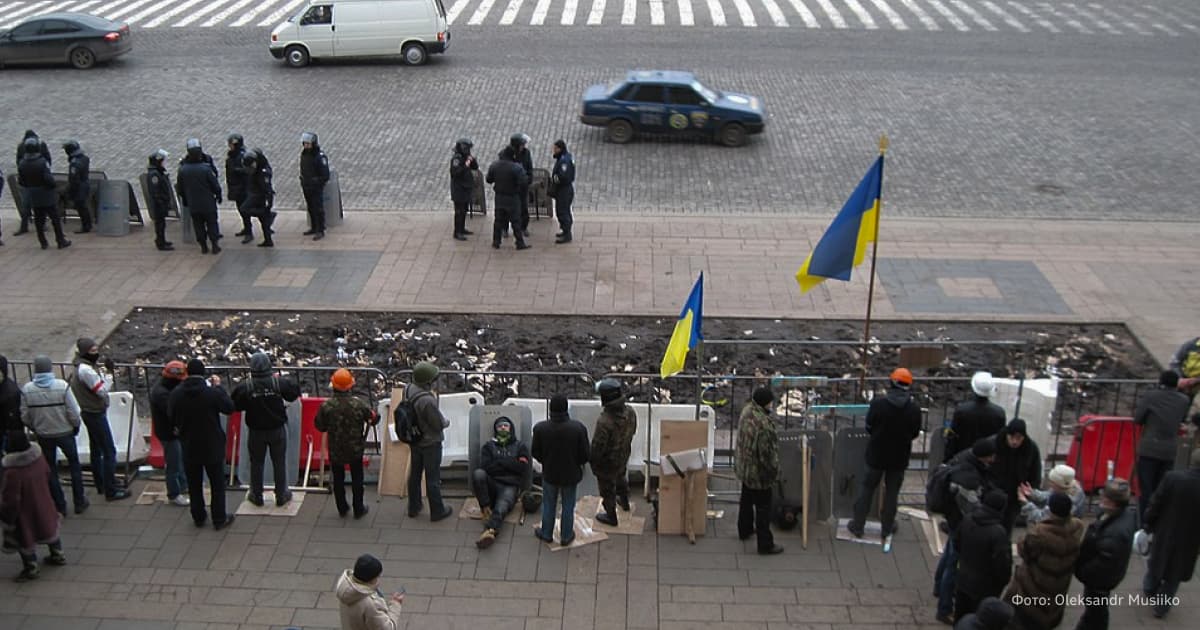"The Spark That Ignited People's Self-Awareness": How the Revolution of Dignity Changed Kharkiv and Its Destiny

As Ukraine marks the 11th anniversary of the Revolution of Dignity, its significance continues to resonate across the country. Streets like Instytutska, Hrushevskyi, Mariinskyi Park, and Khreshchatyk, now synonymous with the revolution, are etched into the national memory. They are studied in schools and remembered by millions of Ukrainians with both pride and sorrow.
However, one city was particularly impacted by the events of Maidan. The city would be the first to face Russian troops on its outskirts in February 2022. Kharkiv was profoundly changed by the 2014 revolution. Yet, this part of the story is often overlooked in History classes at school, with little attention paid to how Kharkiv was transformed.
Svidomi spoke with Dmytro “Fila” Bondarenko, a participant in Kharkiv's Revolution of Dignity and a current member of the Ukrainian Armed Forces who shared his memories and reflections on what Maidan meant for Kharkiv residents.
How did it All Begin?
In 2013-2014, Kharkiv was a very different place from the one many Ukrainians think of today. At the time, Dmytro "Fila" Bondarenko was a football ultras group member with the Metalist club. He joined the armed forces after the start of the full-scale invasion but was demobilised because of a head injury. Dmytro recalls his hometown as being largely pro-Russian at the beginning of the Revolution of Dignity; first gatherings on Kharkiv’s main square were not particularly crowded. Kharkiv mirrored the main events of the revolution in Kyiv. Yet everything took place on a much smaller scale. Usually, 100-200 people came to the rallies. The largest Kharkiv Maidan in February 2014 gathered up to several tens of thousands of Ukrainians.
Unlike in most cities, students in Kharkiv were a minority on Euromaidan. When nationwide protests erupted in November 2013, only a small group of students from Karazin Kharkiv National University joined the strike. The core of Kharkiv's Maidan movement was made up of civil society activists and the city's football ultras, Bondarenko recalls.
Most of the Euromaidan events in Kharkiv took place near the Shevchenko monument in the city centre. Initially, the central Svoboda [Freedom] Square was the place where protesters gathered. In the early days, the then Kharkiv regional state administration had blocked off the entire square for several months, hoping to prevent “a replay of the events in Kyiv”.
“At the time, I had the feeling that I was behind enemy lines, not in a Ukrainian city. There were large “anti-Maidan” protests made up of titushky [mercenary agents in Ukraine who supported the Ukrainian security services during the government of Viktor Yanukovych, often disguised as street hooligans in sportswear to act as provocateurs at pro-European and anti-Yanukovych political rallies – ed.], the pro-Russian organisation Oplot (Stronghold) and the Russians that were brought in. Back then, in December, I went to Kyiv for the first time with my buddies, to Instytutska Street, without telling my family. To be precise, I said I was going on a trip to Poltava. At that time it was called “Provocateur's Day” [the escalation of clashes between protesters and police officers on December 1, 2013, near the then Presidential Administration of Ukraine – ed.]. Then I would go back and forth from Kharkiv to the Kyiv Maidan. The difference was enormous. In Kyiv, you felt like part of a big organism, where everyone was charged with the same goal and the same idea. I had goosebumps. It was a feeling of unity that is impossible to describe. In Kharkiv, the Maidan was bigger against all odds. You understand that it's scary, that your neighbours and friends can betray you, but it's your home that you have to protect,” explains Dmytro.
How did the Kharkiv Revolution of Dignity Unfold?
The Kharkiv Maidan experienced the same events as Kyiv but on a smaller scale. The ultras were an important and active part of the Maidan. The authorities had lists of all the people involved since Euro 2012, explains Dmytro. The Berkut [former Ukrainian system of special police (riot police) - ed.] and Kharkiv Security Service units then used these lists to detain Euromaidan participants from among the ultras. After detention, a person could face many things: from arrest to beatings and kidnapping.
The organisation of the rallies was minimal. According to Bondarenko, people gathered at known places that had been discussed at previous rallies. Maidan participants moved around the city in small groups of 2-3 people, changing locations. If they did not follow these security measures, they put themselves in danger. "It was ‘fun’," adds Dmytro.
"It [organising protests in Kharkiv – ed.] was very difficult. Few people came out. Instead, buses arrived from Belgorod, Kursk and Rostov, full of Russians. It was very easy to recognise them – they spoke differently, didn't know our brands. Once they even stormed the opera house, taking it for the City Hall. There was also resistance to Euromaidan among the people of Kharkiv because of the Oplot club, then run by Zhylin, a Yanukovych protégé who hired local “athletes” as titushky for money. Most of them did not even understand what was happening. They were paid, so they came. Some of them even joined the Metalist ultras after we talked to them and explained the situation," Bondarenko says.
Despite their smaller numbers, the Ukrainian forces in Kharkiv had a significant advantage over the anti-Maidan forces in one area: ideology. Titushky and Oplot members, imported Russians and pro-Russian forces in the city were not motivated, they worked for money. This was one of the main differences that helped the pro-Ukrainian forces to hold out despite having fewer people.
However, among the participants in the anti-Maidan and pro-Russian rallies, there were also people who came to such actions of their own free will. It is difficult to call these people “ideological”. Most of them were victims of Russian propaganda, which has been active in the city for decades.
"I remember meeting a man at Kharkiv's Maidan. He said to me: 'But there are zapadentsi [a term commonly used to describe the indigenous people of western Ukraine – ed.] in Lviv! I replied: 'Let's try a little experiment. I will pay for your trip to Lviv and back. You will arrive in the morning and return to Kharkiv in the evening. You will find that here there are no ghouls or 'crucified boys' [a fake story of a three-year-old child being 'crucified' by Ukrainian nationalists – ed.]. They will turn out to be nicer people than your old neighbours. There was no response from him for a long time. He just said: 'You are just like them' and turned around, spat and left. Everyone was under the propaganda myth that people in the west of the country were different, like with tails and horns," says Dmytro "Fila" Bondarenko.
Two Months When Kharkiv Could Have Been Lost
After the victory of the Revolution of Dignity in Ukraine and the escape of Yanukovych, Kharkiv experienced its most unstable month. From March 1 to April 8, 2014, the Kharkiv Regional State Administration was seized several times by pro-Russian forces and Russians. Most of these seizures were accompanied by beatings of pro-Ukrainian protesters. Kharkiv faced a war for the fate of the city, with weekly clashes between Ukrainian and Russian forces. The police and local authorities did nothing.
"When the Regional State Administration was first seized, for some reason I thought that tomorrow we would wake up in a different city. We would see what had happened to Luhansk and Donetsk. I am a strong man, but I went and cried. I thought we would lose the city," Bondarenko adds.
In his opinion, the release of Andrii Biletskyi on February 25 from Kharkiv's pre-trial detention centre, where he had been held since December 2011, played an important role in the city's defence. At the time, Andrii Biletskyi headed the Right Sector-East movement and led pro-Ukrainian activists in an armed clash with pro-Russian forces near the office of the Patriot of Ukraine organisation on Rymarska Street on the night of March 14-15, 2014. The pro-Russian attackers were repulsed. Two of them were killed in the clashes.
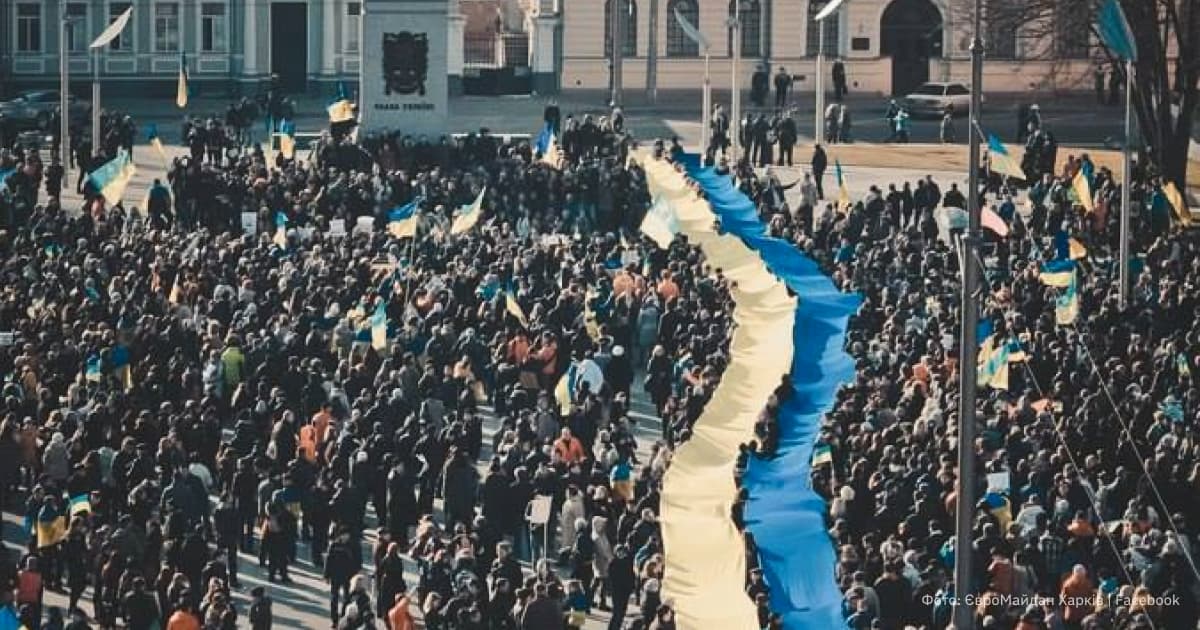
These events culminated on April 6-8, when the fate of the city was threatened by the possible proclamation of the "Kharkiv People's Republic", following the example of the so-called "Donetsk People's Republic" and "Luhansk People's Republic". On the night of April 8, the Regional State Administration was unblocked from the separatists by the special Jaguar unit of the Security Service of Ukraine. After that, their activity declined and the last clashes between Metalist ultras and separatists took place on April 27.
Do Kharkiv Residents Keep the Memory of the Maidan Alive?
In 2015, the city suffered a tragedy. On February 22, Russian terrorists detonated a bomb during a march in honour of the anniversary of the Revolution. Four people were killed: 15-year-old Dmytro Didik, 18-year-old Mykola Melnychuk, 37-year-old Vadym Rybalchenko and 52-year-old Ihor Tolmachov. All of them were ahead of the march to protect the participants from attacks by pro-Russian forces. This came as a shock for Kharkiv: despite the victory of the Revolution, direct support for it could still harm pro-Ukrainian activists. Proximity to Russia has never been a gift for nations that pursue democratic values. The struggle for Kharkiv's Ukrainian destiny continued after the first months of 2014.
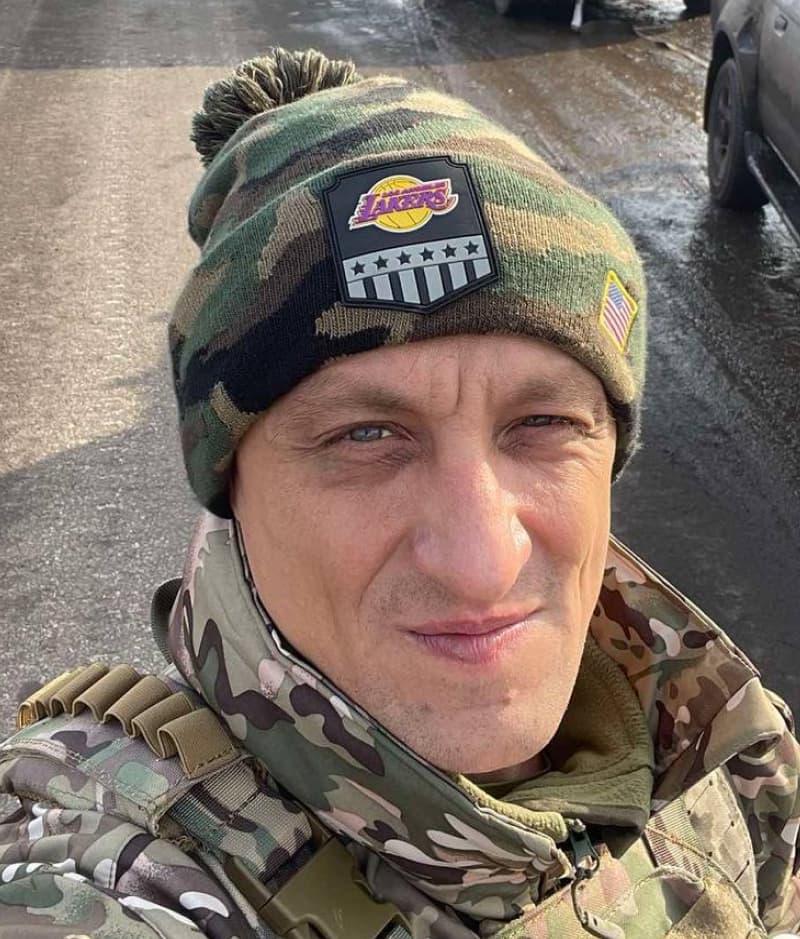
During the attack itself, my friends were there. I only had time to get there until 3-4 minutes before it happened. There could have been many more victims, but there was a Gazelle minibus that protected most people from the explosion of an anti-personnel mine. This was the moment when we realised the gravity of the situation. Of course, there had been fights in the streets before, and it was restless. But this time it was a real terrorist attack using a mine. It was not some kind of improvised explosive device, but real explosives. It's hard to say whether it was a moment of unity or fear. I just felt that we were not being played with, we were going to be killed,
Dmytro recalls.
In his words, Kharkiv does not remember the Maidan well enough. There is still a part of the population for whom these events remain negative. They remember the 8-dollar exchange rate and lower food prices. Another part of the population is disappointed in the Maidan, specifically in its consequences.
"I studied history, so I understand that such transition processes can take years and decades. Some people may still not understand where the real Ukrainian Kharkiv began. But the main thing is that the Maidan broke out," says Dmytro. He notes that many Kharkiv residents are disappointed with the outcome of Euromaidan. "We had a great chance for change. We could have done much more. Perhaps if we had, there would have been no annexation and no military action. Perhaps we could have at least kept Donbas. After a certain time, Dobkin, Kernes and Muraiev, who had been hiding, frightened by the events of the Revolution of Dignity, returned. They came back, they didn't disappear," explains Dmytro.
The excitement was lost. This led to a certain forgetting of the importance of Maidan. This is the fault of both the government and society at the time.
What did the Revolution of Dignity Mean for the City?
"The city slowly began to change after the Maidan," Dmytro recalls. "The Revolution of Dignity opened people's eyes. Pro-Ukrainian forces began to unite and explain to the rest of us what was happening in the country. They started asking obvious questions that the pro-Russian part of the city had no answers to. A radical change came with the full-scale invasion. At that time [in 2014 - ed.] we thought that everything had to happen more dramatically and more quickly. Now I realise, thank God, that it happened at all. The Maidan was the spark that ignited people's self-awareness. We began to understand that we were a nation, we were Ukrainians, not some half-Russian, half-somebody. This is the most important achievement of the Maidan – the restoration of national consciousness. If there had been a full-scale invasion before Maidan, everything would have been much sadder," says Dmytro.
Bondarenko believes that after the Revolution of Dignity, many things were not done, both in the country as a whole and in Kharkiv in particular. But the revolution itself was the impetus that changed the fate of the whole country forever. It proclaimed that Kharkiv was a Ukrainian city that would never be part of Russia.
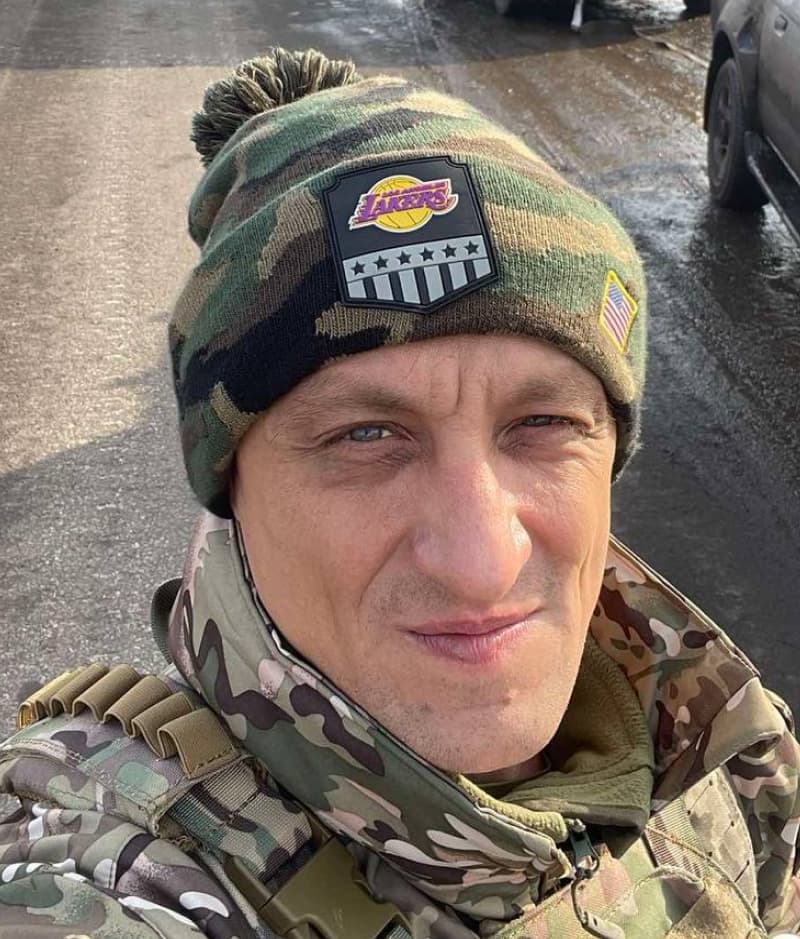
Maidan changed a lot in me. I admit that before the revolution I had a lot of wrong, imposed ideas. I think my ancestral blood was at work in me. Although I grew up in Russian culture and spoke Russian, the Maidan made me realise that I am Ukrainian. This is my home, my family, my little homeland (Kharkiv region). We managed to defend it in 2014 with the help of patriots and honest law enforcement officers. In 2022, with the help of local forces, we managed to repel the Russians and prevent Kharkiv from following the fate of Mariupol,
concludes Dmytro "Fila" Bondarenko.

